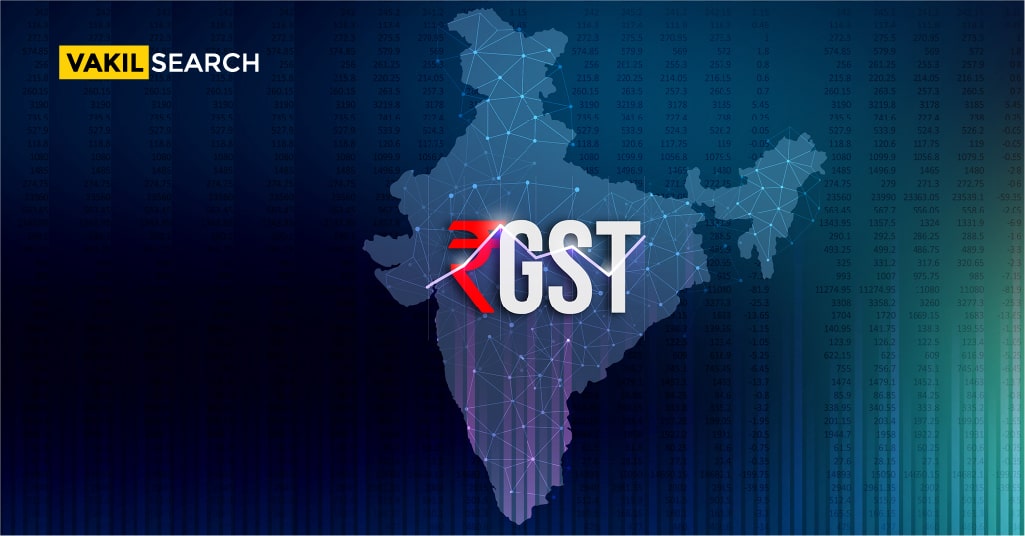By now everyone has heard about GST. But most still don’t understand the basics of it. So, here is a quick read for you to brush up on the basics of GST so you can understand the system better.
Overview:
The Goods and Services Tax (GST) is an indirect tax that has replaced many indirect taxes in India such as excise duty, VAT, service tax, etc. GST was passed in parliament on 29 March 2017 and came into effect on 1 July of the same year. Know more about the Basics of GST in India!
GST is levied on the supply of goods and services. It is a comprehensive, multi-stage, destination-based tax that is levied on every value addition. As a result, GST has now become a single domestic indirect tax law for the entire country. Under the GST regime, tax is levied at every point of sale.
Advantages of GST
- GST has eliminated the cascading effect on the sale of goods and services
- GST has eliminated the tax on tax
- Cost of goods decreased thanks to the GST
- GST is technologically driven
- GST Registration, return filings, application for a refund, and response to notice needs to be done online.
Types of GST in India
There are three types of GST
- Central GST or CGST: It is the tax collected by the central government on intra-state sales
- State GST or SGST: Tax collected by the state government on intra-state sales
- IGST: Tax collected by the central government for an inter-state sale
Invoice Under GST
-
E-Way Bills
- In April 2018, GST introduced the e-way bills for the inter-state movement of goods
- Under this system, e-Way bills can be generated for goods transported from the place of origin to their destination on a common portal
- Tax authorities are also benefited as this system has reduced time at check-posts and helped reduce tax evasion.
-
E-Invoicing
- An e-Invoicing system was introduced in October 2020 for businesses with an annual turnover of over ₹500 crore
- Further from 1 January 2021, this was extended to those with an annual aggregate turnover of over ₹100 crore
- e-Invoicing allows interoperability of invoices and helps reduce data entry errors. It is designed to pass the invoice information directly from the IRP to the GST portal and the e-Way bill portal.
GST Invoice
The GST invoice is issued based on the person who is supplying goods and services. As a result, there are seven types of GST invoices. These include the following:
-
- Tax invoice
- Bill of supply
- Receipt voucher
- Refund voucher
- Invoice used for continuous supply
- Invoice used on termination of supply of services
- Consolidated tax invoice (CTI)
-
Tax Invoice
The tax invoice is a GST invoice that is usually issued by the seller to the buyer on the purchase of taxable goods and services. Tax invoices include the following details:
-
- Price of each sold good or rendered service
- Name of the product
- Unit of goods and services sold
- Description of the goods and service
- Terms of supply
- Date of supply
- Discount (if any)
Bill of Supply
A bill of supply is a type of GST invoice that is issued by a GST-registered seller who supplies exempted goods or under the composition scheme in the Goods and Service Tax, as per the Central GST Act of 2017.
Receipt Voucher
Receipt vouchers are the GST invoices that are issued by suppliers on receiving an advance payment on the purchase of goods and services.
Refund Voucher
Unlike receipt vouchers, refund vouchers are issued if the supplier cannot provide the goods and service to the buyer.
Invoice Issued for Continuous Supply
This GST invoice is issued along with account statements at the time of receiving payments, for a continuous or regular supply of GST by suppliers to customers.
Invoice Issued on Termination of Supply Services
This is a special type of GST invoice issued when a contract for the supply of services between a supplier and a buyer is terminated. Additionally, an invoice is issued for a period the contract was active as well.
Consolidated Tax Invoice (CTI)
A CTI is issued to unregistered recipients under GST and does not require an invoice.
GST Invoice Format
According to the CGST Act of 2017, the GST invoice format should specify the following fields mandatorily:
- Invoice date
- Invoice number
- Name of the customer
- Billing/shipping address of the customer
- Description of goods/services sold
- Quantity of goods/services sold
- Unit price
- GSTIN of taxpayer/customer
- Location of supply
- Harmonised System of Nomenclature
- Taxable value/applicable discount
- GST rates and total GST charged including details of applicable CGST/SGST/IGST for the item
- Signature of the supplier
Who Should Register for GST?
Sale of Goods
| Businesses with aggregate turnover exceeding 40 lakhs in the normal category states | Businesses with aggregate turnover exceeding 20 lakhs in the normal category states |
Service Providers
| Businesses with aggregate turnover exceeding 20 lakhs in the normal category states | Businesses with aggregate turnover exceeding 10 lakhs in the normal category states |
Special category states: Arunachal Pradesh, Assam, Jammu & Kashmir, Manipur, Meghalaya, Mizoram, Nagaland, Sikkim, Tripura, Himachal Pradesh, and Uttarakhand
GST Returns
Every individual/company/LLP registered under the GST Act has to file for GST returns regularly. To calculate your tax liability, the Indian tax authorities need you to file GST returns.
GST Return Filings happens through the filing of different GST forms like GSTR-1, GSTR-2, GSTR-3B, GSTR- 9, etc.
The forms you end up filing are based on your turnover and transactions. GSTR-1 (monthly/quarterly return), GSTR-3B (monthly summary return filed), and GSTR-9 (annual return) are the most common forms that almost every taxpayer needs to file.
Easy Way to File GST Returns
If you have a business and don’t have the bandwidth or the expertise to file GST returns, reach out to us at Vakilsearch. Our team of experts will guide you and file your GST returns for you.
FAQs
What are the four types of GST?
There are four types of GST in India: Central GST (CGST): This is levied by the central government on all intrastate supplies of goods and services. State GST (SGST): This is levied by the state government on all intrastate supplies of goods and services. Integrated GST (IGST): This is levied on all inter-state supplies of goods and services. Union Territory GST (UTGST): This is levied on all supplies of goods and services made within a union territory.
How GST is calculated?
GST is calculated by multiplying the GST rate with the value of the goods or services being supplied. For example, if the GST rate is 18% and the value of the goods or services being supplied is Rs. 1000, then the GST amount will be Rs. 180.
What are the 6 GST items?
The six GST items are:
● Goods
● Services
● Petroleum products
● Alcohol
● Tobacco
● Lottery
How do you calculate 18% GST?
To calculate 18% GST, you need to multiply the value of the goods or services being supplied by 0.18. For example, if the value of the goods or services being supplied is Rs. 1000, then the 18% GST amount will be Rs. 180.
What is the GST formula easy?
The easy formula for calculating GST is:
GST Amount = GST Rate * Value of goods or services being supplied.
How do I remove 18% GST from my total amount?
To remove 18% GST from your total amount, you need to divide the total amount by 1.18. For example, if the total amount is Rs. 1180, then the amount after removing 18% GST will be Rs. 1000.
What is the GST rate?
The GST rate is the percentage of tax that is levied on the supply of goods and services. The GST rate varies depending on the type of goods or services being supplied. For example, the GST rate for food items is 0%, while the GST rate for luxury items is 28%.
What is the HSN code?
The HSN code, or Harmonized System Nomenclature code, is a six-digit code that is used to classify goods for the purpose of international trade. The HSN code is also used to determine the GST rate for goods.
What is ITC in GST?
ITC stands for input tax credit. It is a mechanism that allows businesses to offset the GST paid on their inputs against the GST payable on their outputs. This helps to avoid double taxation.
What is RCM in GST?
RCM stands for reverse charge mechanism. It is a mechanism that shifts the responsibility of paying GST from the supplier to the recipient of the goods or services. RCM is applicable in certain cases, such as when the recipient is a government agency or a public sector undertaking.
What is zero-rated goods?
Zero-rated goods are goods on which the GST rate is 0%. Examples of zero-rated goods include food items, agricultural products, and exports.
Who is eligible for ITC?
All registered businesses are eligible to claim ITC on the GST paid on their inputs. However, there are certain restrictions on the ITC that can be claimed. For example, ITC cannot be claimed on the GST paid on capital goods and motor vehicles.










